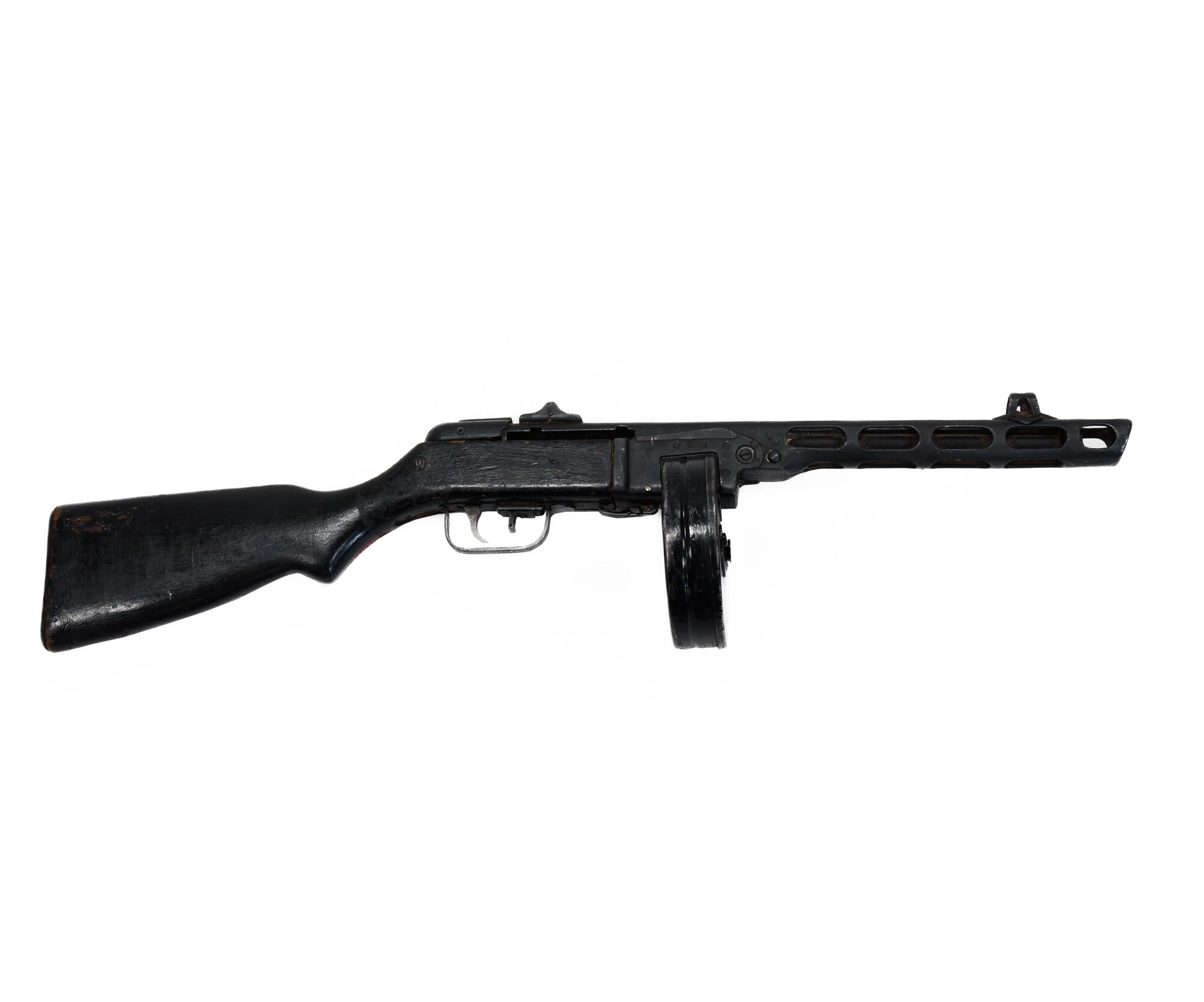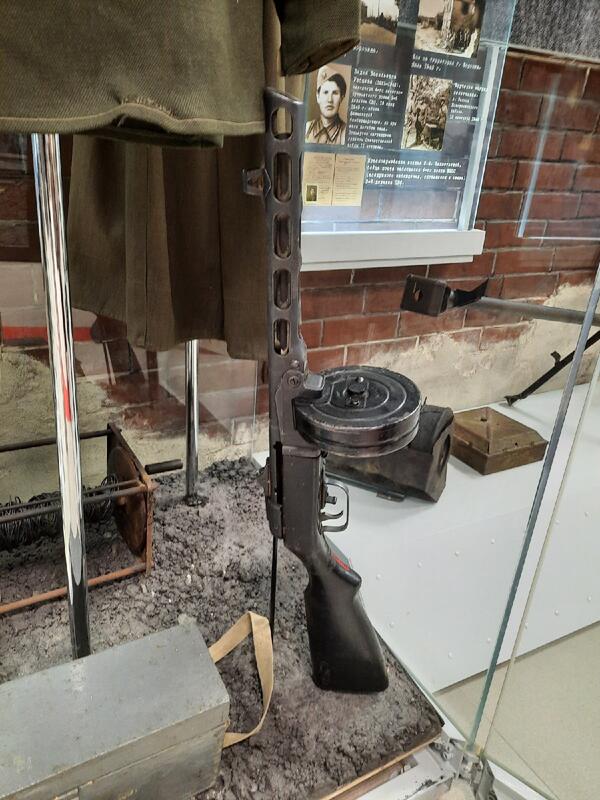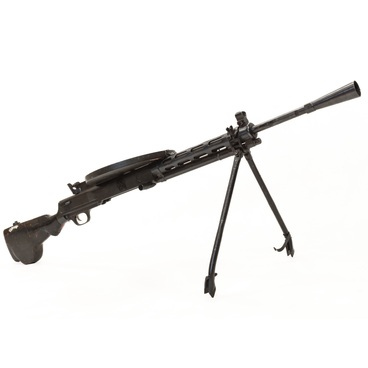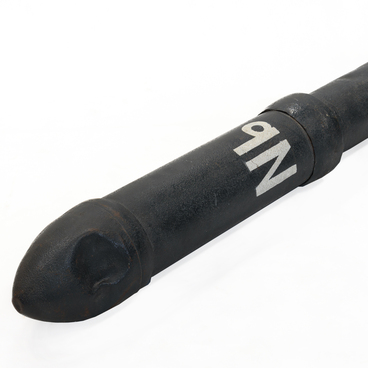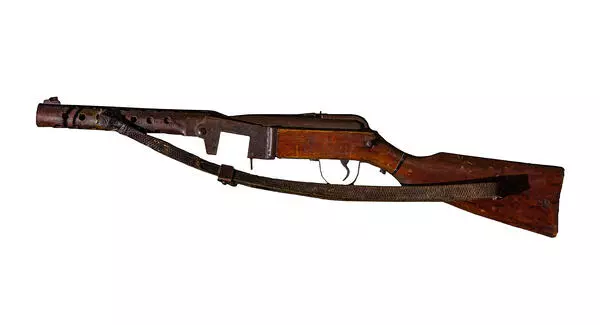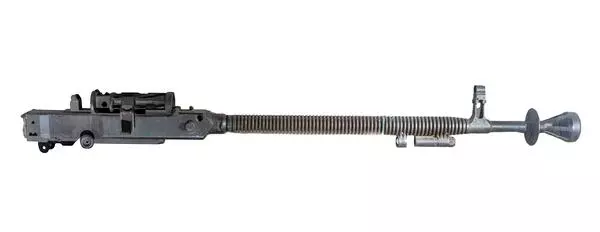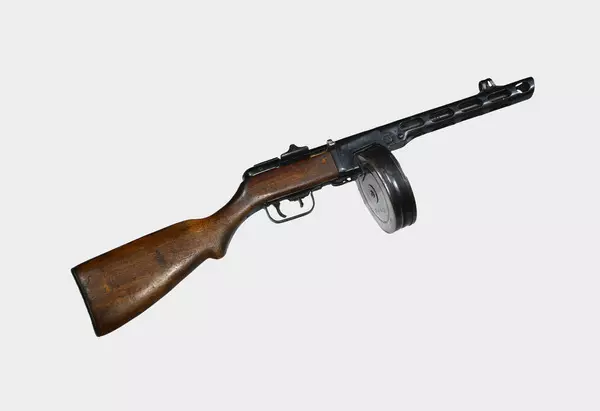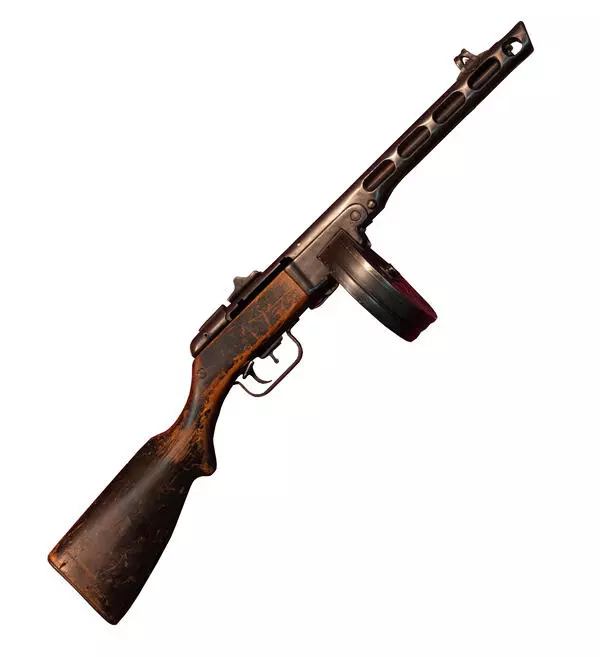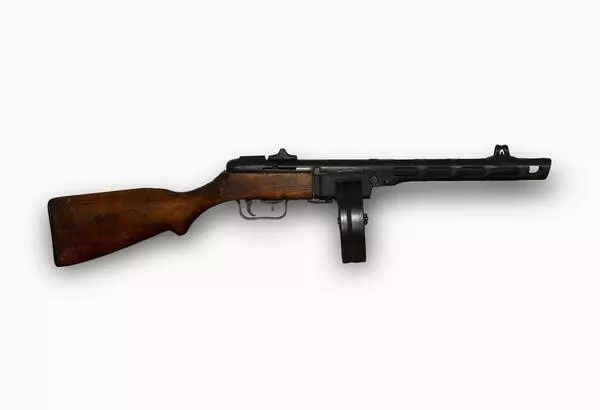In 1940, the People’s Commissariat of Armament of the USSR turned to gunsmiths with an assignment to develop a submachine gun, the parts of which would require almost no mechanical processing. It had to be so simple to manufacture that its production, if necessary, could be quickly launched at any machine-building plant.
In the fall of 1940, the designer Georgy Semyonovich Shpagin presented his model of a submachine gun. It used pistol cartridges — the same ones as for the TT pistol. Hence, it was referred to as a submachine gun, and not a machine gun. This submachine gun was adopted by the Red Army in December 1940 under the designation “7.62mm Shpagin submachine gun of the 1941 model (PPSh-41)”.
The PPSh was a selective-fire submachine gun (both a fully automatic and a semi-automatic gun). Its main advantage was that only its bore needed to be carefully manufactured. All other metal parts were made using the metal stamping method. It was possible to disassemble and assemble the submachine gun without a screwdriver — it did not have a single screw connection. Unlike the German submachine gun, the PPSh was easier to manufacture and much easier to operate. All parts of the German MP-40 were very precisely fitted to each other, which had its drawbacks in combat: any dirt, sand, or water often disabled the German submachine guns. In addition, the PPSh had a barrel jacket with holes, which made it possible to cool down the barrel during firing, and the fighter could also grab the jacket with his bare hands without fear of getting burned. German soldiers often put a glove on their left hand to protect it from burns from the red-hot barrel of the MP-40 submachine gun.
The PPSh-41 was loaded with a box-type magazine. The simplicity of the design and ease of manufacture of the PPSh-41 made it possible to put it into production at many factories, including non-specialized ones. In total, more than six million PPSh-41s were manufactured during the Great Patriotic War. At the same time, 935,400 submachine guns were produced in Germany from mid-1941 to April 1945.
In the fall of 1940, the designer Georgy Semyonovich Shpagin presented his model of a submachine gun. It used pistol cartridges — the same ones as for the TT pistol. Hence, it was referred to as a submachine gun, and not a machine gun. This submachine gun was adopted by the Red Army in December 1940 under the designation “7.62mm Shpagin submachine gun of the 1941 model (PPSh-41)”.
The PPSh was a selective-fire submachine gun (both a fully automatic and a semi-automatic gun). Its main advantage was that only its bore needed to be carefully manufactured. All other metal parts were made using the metal stamping method. It was possible to disassemble and assemble the submachine gun without a screwdriver — it did not have a single screw connection. Unlike the German submachine gun, the PPSh was easier to manufacture and much easier to operate. All parts of the German MP-40 were very precisely fitted to each other, which had its drawbacks in combat: any dirt, sand, or water often disabled the German submachine guns. In addition, the PPSh had a barrel jacket with holes, which made it possible to cool down the barrel during firing, and the fighter could also grab the jacket with his bare hands without fear of getting burned. German soldiers often put a glove on their left hand to protect it from burns from the red-hot barrel of the MP-40 submachine gun.
The PPSh-41 was loaded with a box-type magazine. The simplicity of the design and ease of manufacture of the PPSh-41 made it possible to put it into production at many factories, including non-specialized ones. In total, more than six million PPSh-41s were manufactured during the Great Patriotic War. At the same time, 935,400 submachine guns were produced in Germany from mid-1941 to April 1945.
